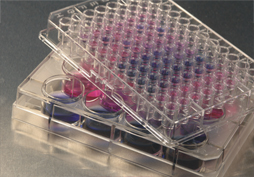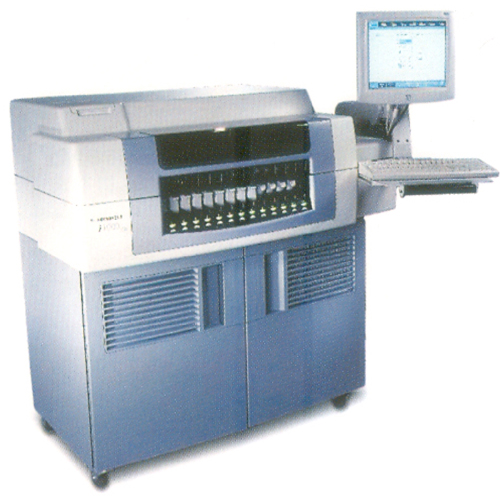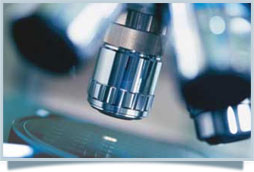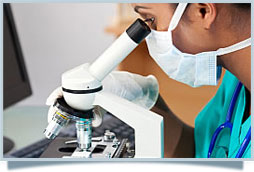
Immunology is both the study of the human immune system and the field of medicine that treats diseases of the immune system. Immunity is the body's ability to resist a disease, and the immune system is a bodywide network of interacting systems: bone marrow, white blood cells, the entire lymph system and even the skin. Immunology dates back to ancient civilizations, as it has long been known that certain individuals are naturally immune to some diseases, and that survivors of certain diseases are immune to the disease they survived.
Since the immune system is so broad, encompassing everything from blood cells to skin, immunology is a very broad field of study.
Diseases caused by disorders of the immune system may be caused by immunodeficiency, in which parts of the immune system fail to provide an adequate response, or autoimmunity, in which the immune system over responds, causing damage to the body of its host. Other immune disorders include hypersensitivity, in which the system responds inappropriately or too intensely to harmless compounds, as in asthma and allergies.
The specificity of the bond between antibody and antigen has made it an excellent tool in the detection of substances in a variety of diagnostic techniques. Antibodies specific for a desired antigen can be conjugated with radioisotopes, fluorescent labels, or color-forming enzymes are used as a "probe" to detect it.

It utilizes a unique combination of refined chemiluminescence Immuno Assay (CLIA) principle with flexible assay protocols, which are far more sensitive than conventional ELISA.
The various investigations performed by Architect i 1000SR and ELISA include:

Immunoas says are based on ELISA principle that detects the formation of an Antigen-Antibody complex with the aid of conjugate and colour detection.
The ARCHITECT i 1000 SR is the leading edge technology product of ABBOTT Diagnostic, USA based on Abbott's patented technologies.
| Hepatitis markers | (Hepatitis A , B, C and E) |
| Infectious Diseases | (HIV I & II, TORCH, TB, Chikungunya, Leptospirosis, Dengue) |
| Anaemia | (Ferritin, B 12, Folic Acid) |
| Thyroid | (T3, T4, TSH, Free T3, Free T4) |
| Autoimmune Diseases | (ANA, Ds DNA, Anti phospholipid Ab, Anti cardiolipin Ab, Anti CCP) |
| Fertility | (FSH, LH, Prolactin, DHEA-S, B HCG, Testosterone, Anti Mullerian Hormone) |
| Tumour Markers | (CEA, AFP, CA 125, CA19-9, PSA ,Free PSA) |
| Cardiac Markers | (BNP, Troponin I, Homocystine) |
| Miscellaneous | (Vitamin D3, Cortisol, Insulin, PTH, Hb A1C,). |
| Allergy Markers | (Ig G levels of more than 42 food items) |

Analysis and estimation of “T” lymphocyte subsets (CD4/CD8) is a useful parameter to monitor disease, determine prognosis, select patients for therapeutic trials & monitor therapy of immunocompromised individuals. The typical pattern of HIV primary infection is characterized by high levels of virus in blood followed by progressive loss of CD4+ T cells & elevation of CD8+ levels. Rapid CD4 decline occurs at the time of seroconversion.
A plateau of gradual decline can last for several years during the asymptomatic period & then again a more rapid decline is seen several months just before AIDS develops. CD8+ cells increase during the first few months of HIV infection & may remain relatively stable thereafter when AIDS develops. Absolute lymphocyte counts drops down & both CD4,CD8 along with CD3 cells decrease in absolute numbers.
CD4 counts thus remain an essential index for making decisions regarding prophylaxis for opportunistic infection & for evaluating the immunological levels of patients on anti-retroviral therapy. They can also be used to evaluate immune competency, underlying known or unknown disease states and to monitor lymphocytes levels following organ transplantation.

Histopathology is the microscopic examination of biological tissues to observe the appearance of diseased cells and tissues in very fine detail.
Samples for histopathology must be processed and fixed for examination. Two processes are used. The first is a chemical fixation procedure in which the tissue samples are immersed in a bath of paraffin, or wax, over a 12- to 16-hour period. This allows the tissue to be sliced into two to seven micrometer sections for examination.
A plateau of gradual decline can last for several years during the asymptomatic period & then again a more rapid decline is seen several months just before AIDS develops. CD8+ cells increase during the first few months of HIV infection & may remain relatively stable thereafter when AIDS develops. Absolute lymphocyte counts drops down & both CD4,CD8 along with CD3 cells decrease in absolute numbers.
CD4 counts thus remain an essential index for making decisions regarding prophylaxis for opportunistic infection & for evaluating the immunological levels of patients on anti-retroviral therapy. They can also be used to evaluate immune competency, underlying known or unknown disease states and to monitor lymphocytes levels following organ transplantation.